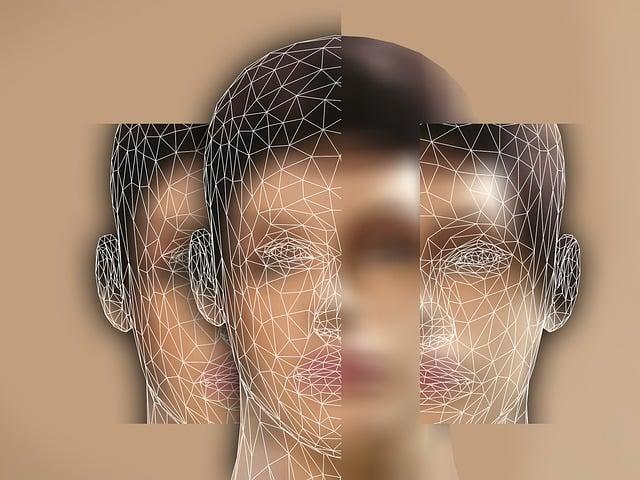Have you ever stopped to ponder what makes a stunning picture truly stand out? Join us on an exciting journey as we delve deep into the fascinating world of image quality. In this captivating article, we will unlock the secrets behind what sets exceptional images apart from the rest. Get ready to explore the intricacies of resolution, color accuracy, sharpness, and so much more. Prepare to be amazed as we uncover the hidden gems that contribute to creating visually stunning images. Let’s embark on this enlightening exploration together and unravel the mysteries behind what makes an image truly captivating.
– Understanding the Complexity of Image Quality
Understanding the complexity of image quality is like diving into a labyrinth of perception and technicality, where nothing is as straightforward as it seems. In the realm of photography and videography, debates over image quality can spark fierce discussions and divided opinions. It’s fascinating how two individuals can look at the same image and come to entirely different conclusions about its quality. This dichotomy arises from the subjective nature of human perception and the myriad factors that affect how we interpret visual information.
When discussing image quality, it’s crucial to understand the distinction between objective and subjective assessments. Objective image quality pertains to the technical aspects of an image, such as resolution, color accuracy, and dynamic range. On the other hand, subjective image quality is shaped by individual preferences, biases, and aesthetic sensibilities. The interplay between these two realms often leads to conflicting viewpoints and heated arguments among photographers, cinematographers, and content creators. In a world where perception is reality, unraveling the secrets of image quality becomes a perpetual journey of discovery and discourse.
– Factors Influencing Subjective Image Perception
Factors influencing subjective image perception are multifaceted and can be influenced by various elements that impact how individuals interpret and evaluate visual content. One crucial factor is the subjective nature of perception itself, as highlighted in the video transcript where the creator discusses their own conflicting opinions on the image quality of different cameras. This subjective aspect underscores the complexity of image perception, as individuals may have diverse preferences, biases, and prior experiences that shape their views on image quality.
Moreover, external factors such as lighting conditions, lens choice, post-processing techniques, and individual viewing devices can also play a significant role in how an image is perceived subjectively. The use of different lenses on the same camera body, as demonstrated in the video, can alter the perceived image quality, showcasing the impact of equipment choices on subjective perception. Additionally, the comparison between cameras in different shooting scenarios, such as low-light conditions, highlights how specific contexts can influence subjective assessments of image quality. This dynamic nature of image perception underscores the intricate interplay of various factors that contribute to how individuals perceive and appreciate visual content.
– Debunking the Myth of Objective Image Superiority
When it comes to the perceived superiority of images, it’s easy to get caught up in a whirlwind of conflicting opinions and subjective preferences. The comparison between different cameras like the Sony A7 S3 and the Blackmagic Cinema Camera 6K can be a perfect example of this puzzling situation. One may believe that the A7 S3 produces better image quality, while simultaneously finding the visuals from the Cinema Camera 6K more appealing. The question arises: what truly defines superior image quality?
Image quality is a multifaceted concept, encompassing various technical aspects and subjective perceptions. It’s not a straightforward metric that can be universally agreed upon. Factors like color accuracy, dynamic range, and overall aesthetics play vital roles in shaping our judgment of image quality. Moreover, the context in which images are viewed, whether it’s low-light environments or high-resolution displays, can significantly influence our evaluation of image superiority. Ultimately, the elusive nature of image quality lies in the eye of the beholder, where personal preferences and individual perspectives intertwine to create a nuanced tapestry of opinions and interpretations.
| Objective Image Quality | Subjective Image Quality |
|---|---|
| Can be measured using technical tools and reference images | Perceived based on personal preferences and aesthetic appeal |
| Focuses on accuracy and fidelity to the original | Emphasizes visual attributes that please human viewers |
– Embracing the Subjectivity of Image Evaluation
Embracing the Subjectivity of Image Evaluation
In the realm of evaluating image quality, one delves into a maze of subjectivity that often leaves us grappling with conflicting viewpoints. Whether you are shooting with an APS-C, full-frame, 1080, 4K, 10 bit, or 8 bit camera, the discussion surrounding image quality is anything but straightforward. Take, for instance, the perplexing scenario where one might perceive the image quality of a Sony A7 S3 to surpass that of a Blackmagic Cinema Camera 6K on the surface, only to find a contrasting opinion upon closer examination.
When we venture into the nebulous world of image evaluation, it becomes apparent that there are multifaceted layers to consider. The essence of image quality is not merely confined to technical specifications but extends to the subjective realm, where personal preferences and interpretations come into play. It’s akin to embarking on a journey where perceptions intertwine with realities, blurring the lines between objectivity and subjectivity. As we navigate through the intricacies of image quality assessment, it becomes evident that embracing the subjectivity inherent in this process is crucial to unraveling the enigma that surrounds it.
Q&A
Q: What is the main topic discussed in the video regarding image quality comparisons?
A: The main focus of the video is to delve into the complexities of image quality comparisons between different cameras. The content creator mentions that discussions surrounding image quality often lead to confusion and differing opinions, as seen in comparisons between cameras like the Sony A7 S3 and Blackmagic Cinema Camera 6K.
Q: How does the content creator describe their personal experience with image quality between the Sony A7 S3 and Blackmagic Cinema Camera 6K?
A: The content creator shares their personal perspective on the image quality of both cameras, noting that while they believe the Sony A7 S3 may have better image quality, they find the images captured by the Cinema Camera 6K to be more visually appealing and cinematic. This subjective evaluation emphasizes that image quality can be subjective and open to individual interpretation.
Q: What insights are provided about objectively assessing image quality in the video?
A: The video highlights the challenges of objectively assessing image quality, pointing out the difference between objective and subjective evaluations. It mentions that human perception plays a significant role in image quality assessment, making it difficult to objectively analyze without specific tools and reference images.
Q: How does the content creator address the influence of individual preferences in evaluating image quality?
A: The content creator acknowledges the impact of individual preferences on image quality evaluation, mentioning that factors like sharpness, dynamic range, and overall aesthetic appeal can vary from person to person. They emphasize that different perspectives lead to diverse opinions on image quality, with no definitive right or wrong when it comes to personal preferences.
Q: What is the key takeaway regarding comparing image quality between different cameras?
A: The video emphasizes that different does not necessarily mean better or worse when comparing image quality between cameras. The content creator highlights the importance of understanding individual preferences and subjective evaluations when assessing image quality, encouraging viewers to engage in constructive conversations rather than resorting to disagreements or debates.
Final Thoughts
As we wrap up this deep dive discussion on the secrets of image quality, it’s evident that the realm of camera comparisons and image assessments is a labyrinthine journey filled with twists and turns. From the conflicting perceptions of image quality between different cameras to the subjective nature of individual preferences, it’s clear that there’s more to this topic than meets the eye.
Through the lens of real-world comparisons between the Sony A7 S3 and Blackmagic Cinema Camera 6K, we’ve delved into the intricacies of image quality evaluation. The quest to determine the superior camera in terms of image fidelity becomes a nuanced exploration where personal biases and subjective interpretations come into play.
As we uncover the layers of image quality, we come to realize that it’s not just about technical specifications and objective measurements. It’s about how an image resonates with the viewer, evoking emotions and encapsulating moments in a visually compelling manner.
In a world where image quality discussions can often lead to heated debates and contrasting opinions, it’s crucial to remember that there’s beauty in diversity. Different perspectives and preferences enrich the discourse, shaping a nuanced understanding of what constitutes exceptional image quality.
So, next time you engage in a conversation about camera gear and image quality, embrace the diversity of opinions, seek to understand varying viewpoints, and appreciate the uniqueness of each individual’s perception. After all, in the realm of image quality, there’s no one-size-fits-all answer – only a rich tapestry of subjective experiences waiting to be explored. Thank you for joining us on this enlightening journey, and until next time, keep capturing moments that speak to your soul.
